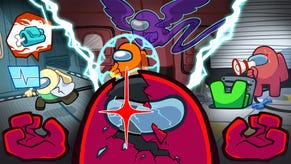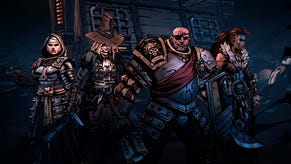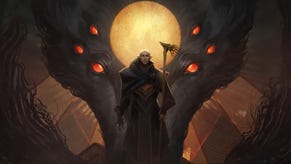Procedurally Generated Points And Clicks: Symon
I was recently pointed in the direction of Symon, a free experimental point and click adventure from Singapore-MIT's game laboratory, Gambit. The idea behind it is to see if it's possible to create a procedurally generated narrative adventure, with unique puzzles. Which is quite an ask. The results, they're an interesting combination of cheats and potential.
You play as a man paralysed in hospital, presumably dying. And from this perspective, you are naturally in fairly sad territory. Each adventure you generate is a dream, and as such embraces dream logic. And there's where the clever cheats come in. Each time you play, and I've played it through six times now, it not only combines together a different collection of scenes, but also a different selection of puzzles using a small set of objects. There are also three main scenarios it picks from, mixing things up further, although for each you're gathering three objects that represent memories from your past, gathered for a version of yourself in a hospital bed within the dream. Following me so far? Good.
Each location has two impossibly standing doors, linking them altogether, a final door not unlocking until all three objects have been collected. And to get them, it's a fairly elementary inventory puzzle situation. Some girls with a balloon want a sad storybook, but the one you've found is cheerful. So you apply dream/adventure logic and click it on some bitter water in a sink. The combination creates a morose storybook, and the girls reward you either with another item used in a similar way elsewhere, or one of the three memories.
Next time you play, they may want a happy story, or some bitter chocolates, or they may not be there at all. Then repeat that idea for five or six locations, and you've got something approaching a unique situation each time you play, albeit with extremely similar motifs each time.
The result is mixed. The first time through it's an interesting experience, a very short, novel adventure, where dream logic makes for an interesting twist. The second time you're impressed at how different it is. And the third all you can see is the matrix. There also appear to be some issues with its letting you go down blind alleys, perhaps turning some roses blue before realising you need them red, and having no way back other than restarting. Restarting five minutes' play admittedly, but it's still a bit crap to do that. But what it does reveal is a great deal of potential. The internal 'logic' is consistent, and if the idea were taken much further, with far more scenes and a vast number more variables, you could end up with something that's genuinely generating a playable experience that would be utterly unique each time. However, as I mentioned before, dream logic allows quite a lot of cheating in design. It'd be interesting to see if it were possible to create something that didn't rely on such obscure combinations.
As a prototype, Symon is really exciting. And as a game itself, it's a surprisingly emotive vignette those first couple of times through. It plays neatly in a browser, although while the music is absolutely lovely, there's no flipping way to shut it up when you're in another tab.











